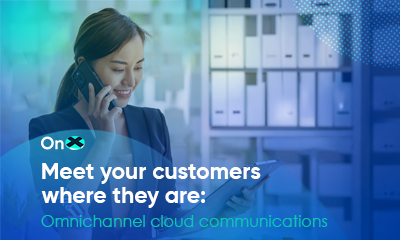
App modernization might seem intimidating at first. But getting help from an experienced, specialized IT partner dramatically reduces the burden on your IT department and improves your end result. A gradual approach will teach your company how modernization works, allow you to troubleshoot on a small scale initially, and introduce your team to its benefits.
Generating a digital transformation strategy that drives results
Staying competitive in the digital era means businesses must streamline digital operations to be flexible while constantly improving user experience (UX). App modernization is a core piece of a digital transformation strategy that organizations must adopt to succeed in the modern marketplace. In addition, modernization adds value to an enterprise’s strategy by implementing cloud-native development and deployment.
Determining where to start can be daunting for most companies. However, not every application needs to be addressed at the same time. A gradual approach will teach your company how modernization works, allow you to troubleshoot on a small scale initially, and introduce your team to its benefits.
App modernization might seem intimidating at first. But getting help from an experienced, specialized IT partner dramatically reduces the burden on your IT department and improves your end result.
Benefits of application modernization
Digital transformation allows your organization to reap the total benefits of cloud computing, including:
- Greater flexibility. Scale, innovate, and streamline systems across the enterprise.
- Improved automation. Boost efficiency by automating tasks.
- Responsiveness. Quickly respond to market demand.
- Speed up deployment. Decrease time to market with cloud deployment and automatic updates.
Also read: Embracing the next generation of application and infrastructure modernization
Six steps to effective app modernization
1. Select apps to modernize
Determine which apps are the most important for business operations and which ones benefit most from cloud optimization. For the most part, apps that are around 5-7 years old are prime candidates. Modernization requires an in-depth assessment to check the viability and vulnerability of existing applications.
This analysis can be carried out either manually or by utilizing automation. Key points of research include:
- Can the business logic be updated into cloud-native frameworks such as serverless computing or microservices?
- What systems need to scale? How quickly?
- What code needs to be updated to conform with the Cloud?
2. Improve UX
Customers expect apps to be easy to use and to deliver services efficiently and on-demand. Therefore, a key consideration of app modernization is UX. In other words, the critical question is: how can your company make applications simpler, easier to use, and with cleaner design?
By gathering data from users, developers can create better apps. Not only will the app improve, but you will demonstrate that you care about UX and generate customer loyalty.
3. Test the new system with proof of concept
Before rolling out the final version of a modernized application, it sometimes makes sense to test it out. Utilizing a proof of concept (PoC) is an ideal way to test out a modernized app on a small scale.
Think of a PoC as a “soft launch.” It is a minimal plan of attack that requires fewer resources than the complete “hard launch” of the final product. A PoC allows you to test application features, stress-test certain functionalities, and demonstrate value to stakeholders. In a PoC, developers rarely need to build out the complete infrastructure of the application; instead, they only need to complete enough of the code to determine viability. Consult with your IT provider to determine if a POC is the right path for your organization.
4. Specify the minimum viable product
One key advantage of app modernization is that it is iterative. In other words, apps now go through continuous improvement and are updated automatically through the Cloud. That is why it is helpful to determine the minimum viable product (MVP) for each specific app version. The MVP is the baseline or minimum amount of value an app adds to fulfill its purpose. Through iterations or updates, you can modify the app with further enhancements.
This approach allows you to shrink development time and speed up the time to market, resulting in additional revenue. In addition, you continuously add value through future iterations of the app.
Also read: Modernize apps and infrastructure, and the processes will follow
5. Build out cloud infrastructure
Your IT team will most likely need to build out existing cloud systems and implement new ones to utilize app modernization fully. Identifying the development environment is a good starting point for this cloud strategy. Next, construct the production environment using infrastructure as code whenever possible, which saves a lot of time through automation of provisioning and lets developers focus on other priorities.
6. Fold automation into the process
Automation is the secret to scaling app modernization rapidly. By using automation, businesses can manage applications, infrastructure, and core business processes with minimal effort.
That is why it’s important to use automation whenever possible. Testing, deployment, networking, provisioning, and backups are all areas of development that benefit from automation. Automated testing confirms that newly modernized apps live up to the standards set by legacy versions. If containers are part of your cloud strategy, you can automate deployment and other tools that help you scale quickly.
Read more: Transform your application launch process with Red Hat OpenShift
Develop a digital transformation strategy to gain a strategic advantage
App modernization speeds up application development, allowing developers to improve apps constantly. This increases an organization’s responsiveness overall by speeding up the development time and decreasing the time to market.
But as we have seen, the process can be intimidating and has many moving parts. Choosing an experienced IT solutions partner will accelerate the process and help your company avoid the common pitfalls of app modernization.
OnX has a long history of successful solutions deployment for businesses and organizations of all sizes. Our experts align with your team’s goals and guide your company through our specific methodology, providing expert guidance at each step of the way.
To get started with your digital transformation strategy, contact us.















